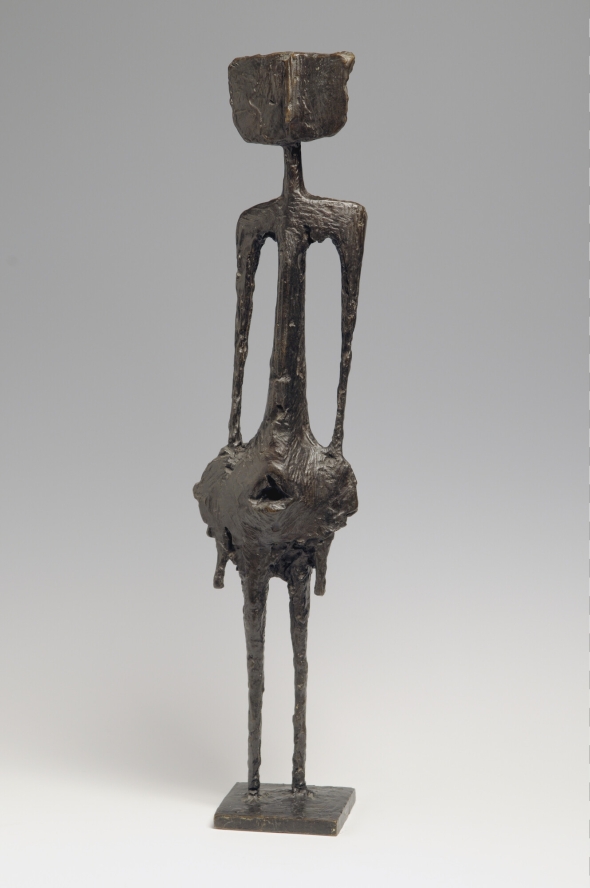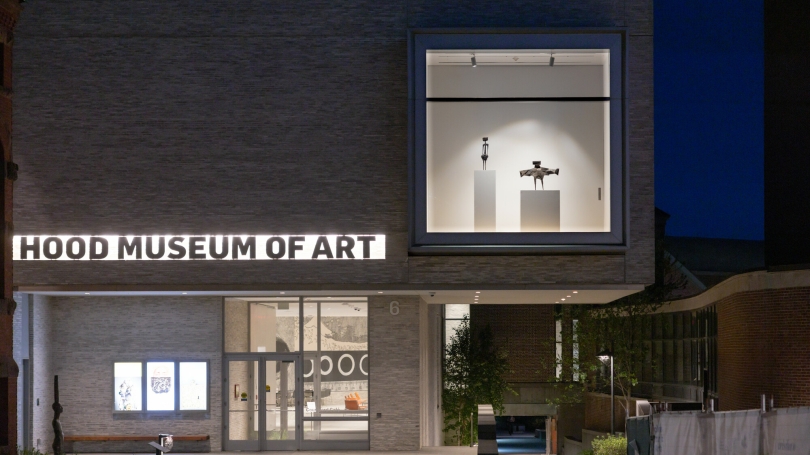Two sculptures by artists Lynn Russell Chadwick and Kenneth Armitage will be visible the Dartmouth Green this summer.
JOHN R. STOMBERG, The Virginia Rice Kelsey 1961s Director
In the window right now, we are featuring work by Lynn Russell Chadwick and Kenneth Armitage. Both sculptors use the human body as a means to give outward expression to inward strife. This theme was common in the post-World War II era—the dawning of the Atomic Age—and is often referred to as "humanist expressionism." This period, especially through the 1950s and early 1960s, witnessed a wave of artists focused on the terror that humans could inflict upon one another.
rs26925_s-983-11-7_001_lpr.jpg

If we look closely at the standing figure by Armitage, we can see a gaping hole in the abdomen that suggests bodily harm. Also, the surfaces seem scraped and scratched from head to toe. The artist accentuated the thin body and limbs, as well as the flattened face, for expressive purposes—suggesting the idea of a person rather than a faithful depiction.
rs26923_s-983-11-1_001_lpr.jpg

Russell's sculpture merges the solid geometries of machines with the general form of, as the title suggests, a "winged figure." Like the Armitage, its surfaces are rough and marked up as though they have been damaged over time. This evocation of mechanical structures merging with human forms was closely aligned with contemporary literary themes exploring the confluence of living beings and the machines they create. This conflation often acknowledged the destructive power of humanity's own creations.
Unlike most sculptures, which really demand to be seen in the round, these two experienced most powerfully from the front, which lends well to their location facing the green. Armitage and Chadwick asserted the flatness of their sculpture, encouraging viewers to "read" the works. In this way, they communicated a generally fraught, even pessimistic, "reading" of humanity as being reduced to two dimensions by years of unfathomable killing during the war. Each in their own way, both sculptors ask us to consider the lasting impact of humankind's embrace of inhumanity during war time—a plea, ultimately, for peace.
